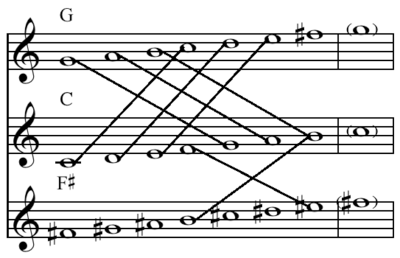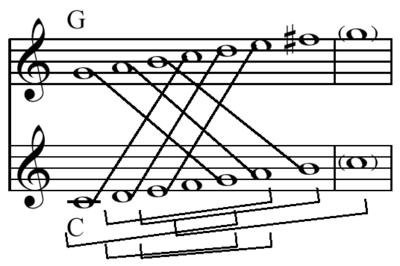Common tone

In music, a common tone is a pitch class that is a member of, or common to two or more entities. For example, a note shared between two chords in a chord progression. Common tones are a consideration in voice leading.
Diatonic set theory

A common tone is a pitch class that is a member of, or common to, a musical scale and a transposition of that scale, as in modulation (Johnson 2003, p. 42). Six of seven possible common tones are shared by closely related keys, though keys may also be thought of as more or less closely related according to their number of common tones.

In diatonic set theory the common tone theorem explains that scales possessing the deep scale property share a different number of common tones for every different transposition of the scale. However many times an interval class occurs in a diatonic scale is the number of tones common both to the original scale and a scale transposed by that particular interval class. For example, then, modulation to the dominant (transposition by a perfect fifth) includes six common tones between the keys as there are six perfect fifths in a diatonic scale, while transposition by the tritone includes only two common tones (for indeed there are two tritone intervals in a diatonic scale). (ibid)

See also
Sources
- Johnson, Timothy (2003). Foundations of Diatonic Theory: A Mathematically Based Approach to Music Fundamentals. Emeryville, CA: Key College Publishing. ISBN 1-930190-80-8.
| ||||||||||||